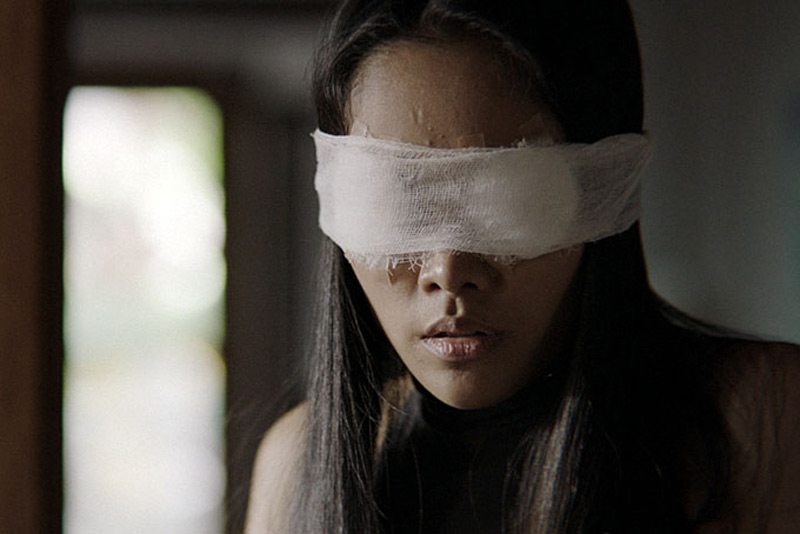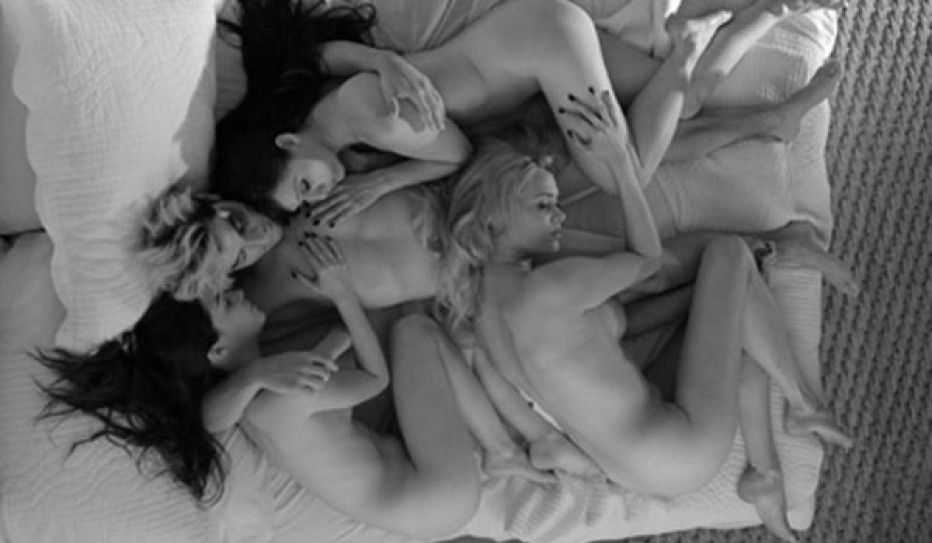« Coffee Break | Main | Coffee Break »
February 14, 2017
Shudder and the Daughters of Frankenstein

Mujer Lobo (Tamae Garateguy - 2013)
One thing leads to another, at least in my cinephilia. A couple of years ago, at the Denver Film Festival, they showed an Argentinian horror film, Mujer Lobo, also known as She Wolf. I was intrigued after seeing the trailer, because it was in black and white, looked a bit sexually transgressive, and was directed by a woman, Tamae Garateguy. There was no screener available for critics, and as I rely on public transportation, the date and time made seeing the film something I had to pass up. I kept hoping this film would get some kind of theatrical or home video release, but that didn't happen, or at least not in a way expected.
Not simply years, but decades of film viewing, and seeing various changes in how films are made and seen has left me with a skeptical eye, but I signed up for my first subscription based internet channel, Shudder. My skepticism comes from seeing specialized cable television channels veer far away from their original missions, remembering a time when I paid to see uncut French movies on Bravo, only to find cable turning into a vaster wasteland than even Newton Minow originally imagined. But, damn it, I really wanted to see Mujer Lobo, and if it meant subscribing to a new channel to add to my Roku, I figured I'd give it a shot. Even better, because of my Facebook connection with Women in Horror Month, I found out that instead of a weeklong free trial, I could get a free month.
My connection to Women in Horror comes from a Facebook conversation about a male film critic who was dismissive about female filmmakers making horror films, and his excuses of never finding time to see a single film. Anyways, I pointed out that the template for a good number of horror and science fiction films originated from a British teenage girl, back in the early 19th Century. I am admittedly not the most enlightened of guys, but its been fifty years since Roger Corman gave Stephanie Rothman her first shot at exploitation glory, and almost two hundred years since Mary Shelley's novel was published, so if someone within near shuffling distance of retirement age has no problem with women making horror films, why does this alleged film critic, certainly much younger than me, have a gynophobic reaction?

Dearest Sister (Mattie Do - 2016)
My other reason for diving into Shudder was the opportunity to see the second feature by Lao filmmaker Mattie Do. I first became aware of Ms. Do through the film critic known as Wise Kwai, who wrote for the English language Thai newspaper, The Nation. Through Wise Kwai, I found out about Do's Indiegogo campaign to raise money for her second film. What I saw on the website was very funny, about how funds were needed to buy more fake movie blood. I should mention, in the interests of full disclosure, etc., that I contributed to the production of the film known as Dearest Sister. This isn't the first time I've put my money where my mouth is - my first time at crowdfunding was for a modern day spaghetti western vampire movie. You might have heard of A Girl Walks Home Alone at Night. So I figure I'm two for two here, as Dearest Sister got more serious production money and played at several prestigious film festivals. And if you bother reading the credits at the end, you'll see my name, spelled correctly for westerners (Thank you, Mattie), and also rendered in Lao in some kind of close approximation.
As for the films themselves, I went on a Sunday binge. Mujer Lobo is visually stunning, though it took me a little while to figure out that there were three actresses playing the part of the title character. Though a bit more experimental visually, and in its narrative, Mujer Lobo made me think back to a couple of modern day vampire films from the mid 90s, Abel Ferrara's The Addiction and Michael Almereyda's Nadja. In this case, Buenos Aries replaces New York City, with Sami Buccella providing a scorching guitar score that is reminiscent of Glenn Branca or Sonic Youth at times. I guess there might be a few male viewers who'd feel threatened by Tamae Garateguy's predatory female in fuck me shoes.

Mujer Lobo (Tamae Garateguy - 2013)
Dearest Sister is about the young country cousin, Nok, who leaves her village for Vientiane, to help her visually impaired older cousin, Ana. There to provide money to send home to her parents, Nok is quickly distracted by the appearances of urban sophistication, and the hierarchies among the servant's in the home of Ana, and her western husband, Jakob. Ana sees ghosts, and after stumbling on deliberately misplaced furniture, utters three numbers which Nok discovers will lead her to win the lottery a few times. The paranormal aspects take a back seat to a narrative that is mostly interested in class distinctions, with a side glance at race. The film is distinguished by the shots from Ana's point of view, out of focus, and sometimes visually abstract.
Shudder has some of its films in collections, the newest, timed for Women in Horror Month, titled "A Woman's Touch". It was through browsing the collection that I discovered that Facebook friend, Briony Kidd, has a short film, Room at the Top of the Stairs, from 2010. The best synopsis is from Hobart, Tasmania, Ms. Kidd's home. Again, there's a nice payoff in reading the end credits and discovering that Briony Kidd's directing mentor was a filmmaker who would get worldwide recognition a few years later with what is arguably the most acclaimed horror film from Australia, The Babadook.

Room at the Top of the Stairs (Briony Kidd - 2010)
Posted by Peter Nellhaus at February 14, 2017 06:56 AM
